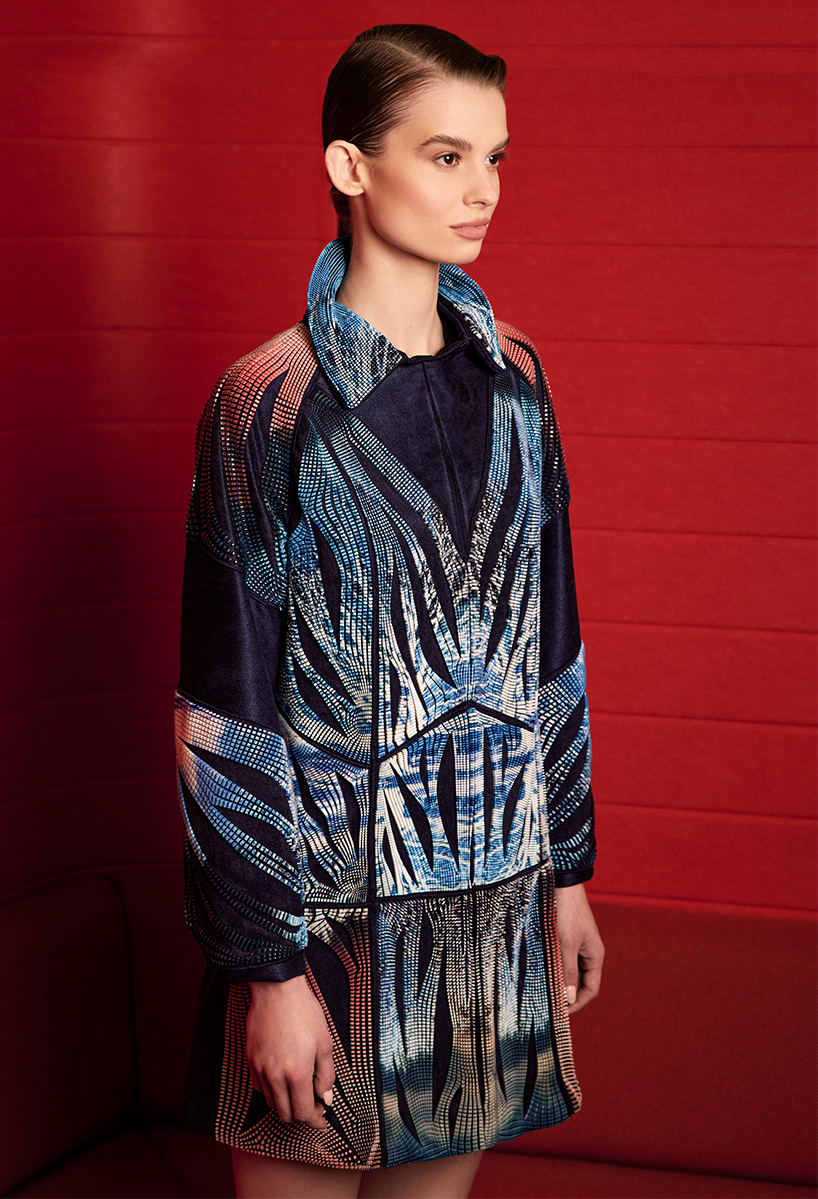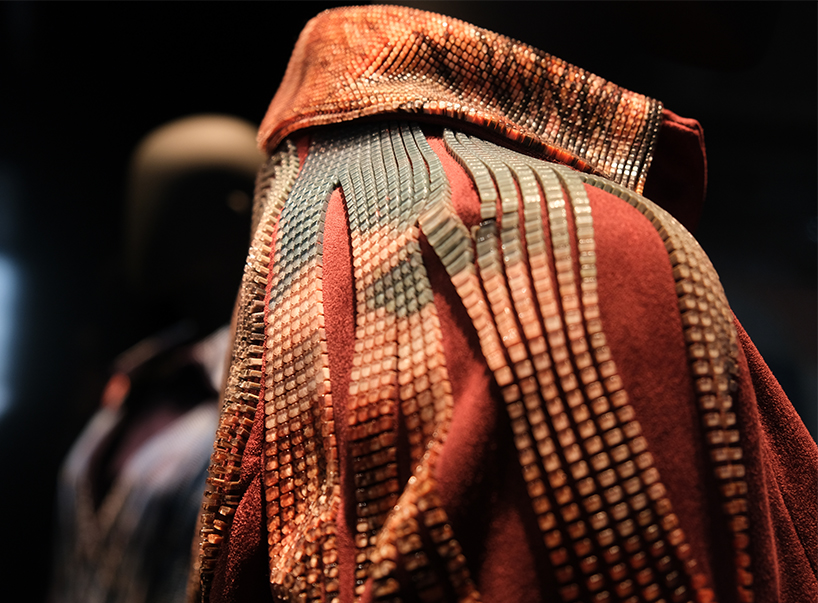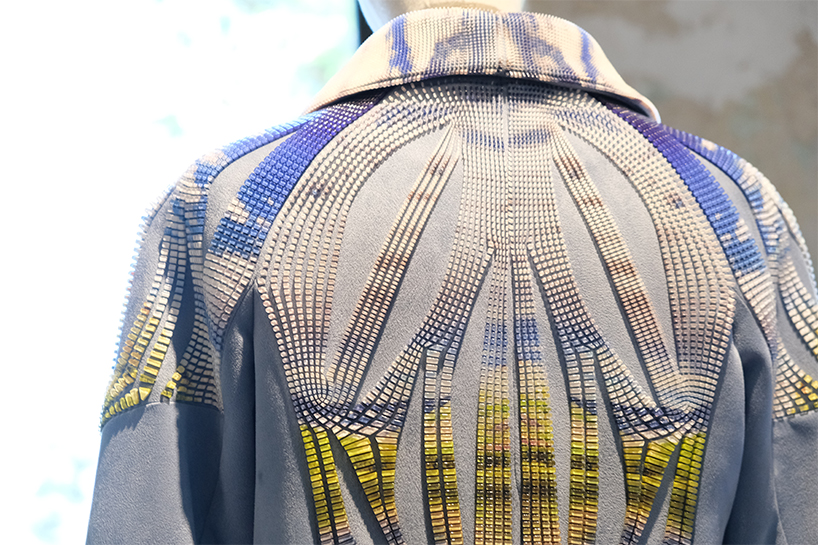ganit goldstein defies fashion trends with her new multicolored, 3D-printed outfits
ganit goldstein ‘gnomon’ collection
3D fashion designer Ganit Goldstein presents ‘GnoMon,’ an innovative 3D-printed fashion collection made with cutting-edge computational textiles. Launched during Milan Design Week 2022, the project was part of the Stratasys SSYS 2Y22 exhibition in Superstudio Piu, via Tortona.
‘GnoMon’ comprises four 3D-printed, multi-colored outfits that demonstrate a new method of printing directly onto materials in over 600,000 colors, with multiple shore values, simulating different textures and finishing techniques. ‘The collection rethinks what constitutes a trend and what qualifies as timeless in the framework of fashion seasons. [It] represents a new kind of textile design involving 3D body scan, digital pattern making, and parametric modeling,’ shares the designer.
Each item was produced using a J850™ TechStyle™ 3D printer and its 3DFashion™ technology. The mechanism incorporates an inkjet polymer that adheres to various fabrics, enabling an unlimited design of printed materials with different colors and transparency. Including Goldstein, seven top designers from around the world were chosen to showcase this unique technology.

3D-printed garment from the ‘GnoMon’ collection by Ganit Goldstein, jointly with Stratasys LTD
rethinking scales and seasons in the fashion industry
Elaborating on her vision for ‘GnoMon’, Ganit Goldstein (see more here) writes: ‘Mass clothing manufacturing has become one of the world’s largest concerns these days. We know that today’s consumers buy 60% more than in 2000 and keep it for half as long, resulting in 53 million tons of old clothing being burned or thrown in landfills yearly. The new collection sheds light on an alternative way to think about scales and times in the fashion industry, where customization and timeless pieces could be a way to change the way we value garments. That’s where the name ‘GnoMon’ comes from — inspired by an ancient astronomical instrument that measures the length of shadows to indicate the time within a day.’

close-up shot of the parametric textile design
Goldstein’s previous collection, ‘WeAreAble,’ featured a few 3D-printed garments designed for a VR setup and as part of the ReFREAM EU Horizon 2020 grant. She also looks to traditional weaving and embroidery, as seen in her ‘Rhythm of Matter’ project — a large scale embroidery piece for her MA at the Royal College of Art, completed jointly with textile manufacturer SAURER in Switzerland.

parametric structures printed directly onto the fabric using a J850™ TechStyle™ printer

